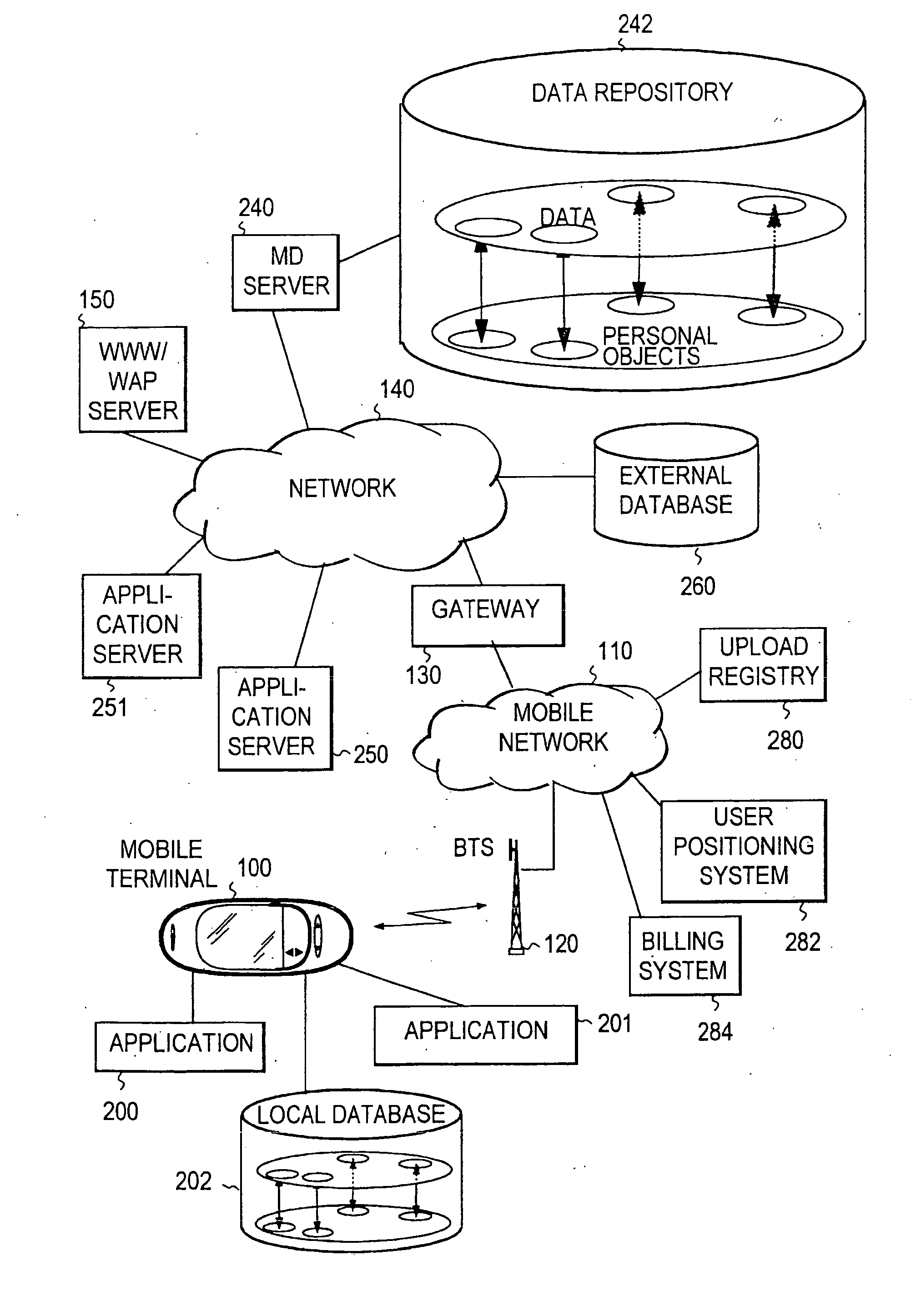Providing personalized services for mobile users
a technology for mobile users and personalized services, applied in the field of personalized services for mobile users, can solve the problems of poor connection stability, less bandwidth, and difficulty in introducing ip-based packet services to the mobile environmen
- Summary
- Abstract
- Description
- Claims
- Application Information
AI Technical Summary
Benefits of technology
Problems solved by technology
Method used
Image
Examples
Embodiment Construction
[0033]FIG. 1 shows a schematic diagram of a prior art system for providing services for mobile users. A mobile network 110 is connected via a gateway element 130 to a communications network 140, such as the Internet. These kinds of arrangements are widely used to provide services to user terminals, of which one mobile terminal 100 is illustrated in the figure. Mainly, the terminals are connected with the mobile network via base transceiver stations (BTS), of which only one BTS 120 is illustrated in FIG. 1. The BTS in plurality form a radio access network for the network 110.
[0034] Many services provided to users are produced in different servers, of which only one WWW / WAP server 150 is illustrated in FIG. 1. The servers 150 are mostly connected directly to the Internet and provide many different services, such as following the stock exchange rates applying criteria supplied by the user subscribing to the service in question. When the server detects that some criterion is fulfilled,...
PUM
 Login to View More
Login to View More Abstract
Description
Claims
Application Information
 Login to View More
Login to View More - R&D
- Intellectual Property
- Life Sciences
- Materials
- Tech Scout
- Unparalleled Data Quality
- Higher Quality Content
- 60% Fewer Hallucinations
Browse by: Latest US Patents, China's latest patents, Technical Efficacy Thesaurus, Application Domain, Technology Topic, Popular Technical Reports.
© 2025 PatSnap. All rights reserved.Legal|Privacy policy|Modern Slavery Act Transparency Statement|Sitemap|About US| Contact US: help@patsnap.com



